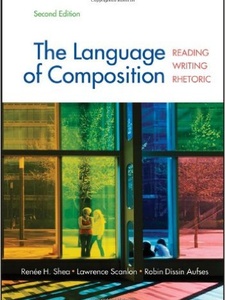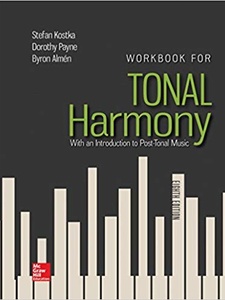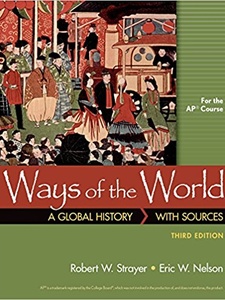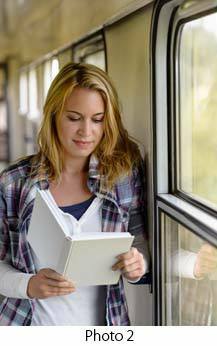Recommended textbook solutions
The Language of Composition: Reading, Writing, Rhetoric
2nd Edition•ISBN: 9780312676506Lawrence Scanlon, Renee H. Shea, Robin Dissin Aufses
661 solutions
U.S. History
1st Edition•ISBN: 9781938168369John Lund, Paul S. Vickery, P. Scott Corbett, Todd Pfannestiel, Volker Janssen
567 solutions
Tonal Harmony, Workbook
8th Edition•ISBN: 9781259686764Byron Almen, Dorothy Payne, Stefan Kostka
1,387 solutions
Ways of the World: A Global History
3rd Edition•ISBN: 9781319022723Robert W. Strayer
232 solutions
Всего: 59 1–20 | 21–40 | 41–59
Добавить в вариант
Задания Д44 C5 № 3984
Study the two photographs. In 1.5 minutes be ready to compare and contrast the photographs:
• give a brief description of the photos (action, location)
• say what the pictures have in common
• say in what way the pictures are different
• say which way of watching films presented in the pictures you prefer
• explain why
You will speak for not more than 2 minutes (12–15 sentences). You have to talk continuously.
Источник: Демонстрационная версия ЕГЭ—2019 по английскому языку
Задания Д44 C5 № 4503
Study the two photographs. In 1.5 minutes be ready to compare and contrast the photographs:
• give a brief description of the photos (action, location)
• say what the pictures have in common
• say in what way the pictures are different
• say which of the professions presented in the pictures you’d prefer
• explain why
You will speak for not more than 2 minutes (12–15 sentences). You have to talk continuously.
Источник: ЕГЭ — 2019. Досрочная волна. Устная часть, ЕГЭ по английскому языку 01.04.2019. Досрочная волна
Задания Д44 C5 № 4588
Study the two photographs. In 1.5 minutes be ready to compare and contrast the photographs:
— give a brief description of the photos (action, location)
— say what the pictures have in common
— say in what way the pictures are different
— say which kind of dessert presented in the pictures you’d prefer in the summer
— explain why
You will speak for not more than 2 minutes (12–15 sentences). You have to talk continuously.
Задания Д44 C5 № 4632
Study the two photographs. In 1.5 minutes be ready to compare and contrast the photographs:
— give a brief description of the photos (action, location)
— say what the pictures have in common
— say in what way the pictures are different
— say which way of spending time with a friend presented in the pictures you preferred in your childhood
— explain why
You will speak for not more than 2 minutes (12–15 sentences). You have to talk continuously.
Задания Д44 C5 № 4677
Study the two photographs. In 1.5 minutes be ready to compare and contrast the photographs:
— give a brief description of the photos (action, location)
— say what the pictures have in common
— say in what way the pictures are different
— say which way of shopping presented in the pictures you’d prefer
— explain why
You will speak for not more than 2 minutes (12–15 sentences). You have to talk continuously.
Задания Д44 C5 № 4774
Study the two photographs. In 1.5 minutes be ready to compare and contrast the photographs:
• give a brief description of the photos (action, location)
• say what the pictures have in common
• say in what way the pictures are different
• say which way of celebration presented in the pictures you prefer
• explain why
You will speak for not more than 2 minutes (12–15 sentences). You have to talk continuously.
Источник: Демонстрационная версия ЕГЭ—2020 по английскому языку, Демонстрационная версия ЕГЭ—2021 по английскому языку
Задания Д44 C5 № 5478
Study the two photographs. In 1.5 minutes be ready to compare and contrast the photographs:
— give a brief description of the photos (action, location)
— say what the pictures have in common
— say in what way the pictures are different
— say what kind of food presented in the pictures you preferred in your childhood
— explain why
You will speak for not more than 2 minutes (12–15 sentences). You have to talk continuously.
Задания Д44 C5 № 6812
Study the two photographs. In 1.5 minutes be ready to compare and contrast the photographs:
• give a brief description of the photos (action, location);
• say what the pictures have in common;
• say in what way the pictures are different;
• say which way of studying presented in the pictures you prefer;
• explain why
You will speak for not more than 2 minutes (12–15 sentences). You have to talk continuously.
Источник: ЕГЭ по английскому языку 2020. Досрочная волна. Вариант 1
Study the two photographs. In 1.5 minutes be ready to compare and contrast the photographs:
— give a brief description of the photos (action, location)
— say what the pictures have in common
— say in what way the pictures are different
— say what kind of sport presented in the pictures you prefer
— explain why
You will speak for not more than 2 minutes (12–15 sentences). You have to talk continuously.
Задания Д44 C5 № 2898
Look at the two pictures. In 1 min 30, you will have to compare:
• give a brief description of the photos (action, location)
• say what the pictures have in common
• say in what way the pictures are different
• say what lifestyle presented in the photos you prefer
• explain why
You should speak for not more than 2 minutes (12–15 sentences). You have to talk continuously.
Источник: РЕШУ ЕГЭ
Задания Д44 C5 № 2950
Study the two photographs. In 1.5 minutes be ready to compare and contrast the photographs:
• give a brief description of the photos (action, location)
• say what the pictures have in common
• say in what way the pictures are different
• say where you’d like to read
• explain why
You will speak for not more than 2 minutes (12–15 sentences). You have to talk continuously.
Задания Д44 C5 № 3218
Study the two photographs. In 1.5 minutes be ready to compare and contrast the photographs:
• give a brief description of the photos (action, location)
• say what the pictures have in common
• say in what way the pictures are different
• say which of the activities presented in the pictures you’d prefer
• explain why
You will speak for not more than 2 minutes (12–15 sentences). You have to talk continuously.
Источник: Демонстрационная версия ЕГЭ—2016 по английскому языку
Задания Д44 C5 № 7543
Study the two photographs. In 1.5 minutes be ready to compare and contrast the photographs:
— give a brief description of the photos (action, location)
— say what the pictures have in common
— say in what way the pictures are different
— say what kind of sport presented in the pictures you prefer
— explain why
You will speak for not more than 2 minutes (12–15 sentences). You have to talk continuously.
You will speak for not more than 2 minutes (12–15 sentences). You have to talk continuously.
Study the two photographs. In 1.5 minutes be ready to compare and contrast the photographs:
• give a brief description of the photos (action, location);
• say what the pictures have in common;
• say in what way the pictures are different;
• say which way of spending free time presented in the pictures you prefer;
• explain why
You will speak for not more than 2 minutes (12−15 sentences). You have to talk continuously.
Источник: ЕГЭ по английскому языку 2021 года. Досрочная волна. Вариант 1
Задания Д44 C5 № 3267
Study the two photographs. In 1.5 minutes be ready to compare and contrast the photographs:
• give a brief description of the photos (action, location)
• say what the pictures have in common
• say in what way the pictures are different
• say which of the activities presented in the pictures you’d prefer
• explain why
You will speak for not more than 2 minutes (12–15 sentences). You have to talk continuously.
Задания Д44 C5 № 3376
Study the two photographs. In 1.5 minutes be ready to compare and contrast the photographs:
• give a brief description of the photos (action, location)
• say what the pictures have in common
• say in what way the pictures are different
• say which of the ways of taking care of your health presented in the pictures you’d prefer
• explain why
You will speak for not more than 2 minutes (12–15 sentences). You have to talk continuously.
Источник: ЕГЭ по английскому языку 08.04.2016. Досрочная волна
Задания Д44 C5 № 6881
Study the two photographs. In 1.5 minutes be ready to compare and contrast the photographs:
• give a brief description of the photos (action, location);
• say what the pictures have in common;
• say in what way the pictures are different;
• say which way of studying presented in the pictures you prefer;
• explain why
You will speak for not more than 2 minutes (12–15 sentences). You have to talk continuously.
Photo 1
Photo 2
Источник: ЕГЭ по английскому языку 2020. Досрочная волна. Вариант 2
Задания Д44 C5 № 3328
Study the two photographs. In 1.5 minutes be ready to compare and contrast the photographs:
• give a brief description of the photos (action, location)
• say what the pictures have in common
• say in what way the pictures are different
• say which of thе profеssions presented in the pictures you’d prefer
• explain why
You will speak for not more than 2 minutes (12–15 sentences). You have to talk continuously.
Задания Д44 C5 № 9161
Study the two photographs. In 1.5 minutes be ready to compare and contrast the photographs:
— give a brief description of the photos (action, location)
— say what the pictures have in common
— say in what way the pictures are different
— say what kind of sport presented in the pictures you prefer
— explain why
You will speak for not more than 2 minutes (12–15 sentences). You have to talk continuously.
Всего: 59 1–20 | 21–40 | 41–59
Presentation on theme: «Photography The word photography comes from Greek words meaning to write or draw with light. Photography is a process of making pictures by the action.»— Presentation transcript:
1
Photography The word photography comes from Greek words meaning to write or draw with light. Photography is a process of making pictures by the action of light. Light is reflected from an object to form an image on a material sensitive to light.
2
Why do people take Photographs?
A camera works somewhat like the human eye, capturing reflected light from objects and through a camera lens and focusing those light rays into an image. Traditionally cameras recorded the image onto film. More recently through the development of computer chips, many cameras capture their images on a computer chip. The computer chip then allows the conversion of the image to digital data. Why do people take Photographs?
3
Photo Terms Digital camera – A camera that captures the photo not on film, but in an electronic imaging sensor that takes the place of film. Exposure — the amount of light captured by the camera. Aperture – A small, circular opening inside the lens that can change in diameter to control the amount of light reaching the camera’s sensor as a picture is taken. The aperture diameter is expressed in f-stops; the lower the number, the larger the aperture. A larger aperture passes more light through to the sensor. Shutter speed – The camera’s shutter speed is a measurement of how long its shutter remains open as the picture is taken. The slower the shutter speed, the longer the exposure time. When the shutter speed is set to 1/125 or simply 125, this means that the shutter will be open for exactly 1/125th of one second. The aperture and shutter speed together control the total amount of light reaching the sensor.
4
Resolution — Resolution refers to the number of pixels in an image.
Pixel – Short for Picture Element, a pixel is a single point in a graphic image Resolution — Resolution refers to the number of pixels in an image. Megapixel — A unit equal to one million pixels. The higher the resolution, the more pixels in an image and therefore the greater the image quality. An image file that is 1 megapixel (MP) can make a photo realistic print of 5 x 7 inches; a 2 MP file can make an 8 x 10-inch print; a 3 MP file can make an 11 x 14-inch print. DPI — Dots Per Inch. Number of dots a printer or device (like a monitor) can display per linear inch. For example, most laser printers have a resolution of 300 dpi, most monitors 72 dpi, most PostScript imagesetters 1200 to 2450 dpi. Photo quality inkjet printers now range from 1200 to 2400 dpi. PPI – Pixels Per Inch. The number of pixels per linear inch is used to describe image resolution. A higher ppi means more image detail and correlates to higher image quality. Monitors display images at 72 ppi, inkjet printers require at least 150 ppi to produce photo realistic prints.
5
Other Terms LCD — Liquid Crystal Display: a low-power monitor used on the rear of a digital camera to display settings or the photos themselves or use to compose photos in shooting modes. JPEG — Joint Photographic Experts Group, A standardized format used by many digital cameras for storing images. This format is also commonly used for images on the web and images attached to messages. GIF — Graphic Image File format. A widely supported image-storage format released in 1987 and promoted by CompuServe. It gained early widespread use on on-line services and the Internet. An excellent format for graphics used on the World Wide Web (WWW), and there are animated GIFs too. (JPEG is better for photographs) TIFF — Tagged Image/Interchange File Format. In digital imaging, a file-storage format implemented on a wide variety of computer systems. Considered an industry standard, but so open that header information is used in many different ways. Macro mode. a lens mode that allows you to get very close to objects so they appear greatly enlarged in the picture. Most cameras have a setting for macro photography with an icon of a flower to designate it. Depth of field — the range of distance in a scene that appears to be in focus and will be reproduced as being acceptably sharp in an image. Depth of field is controlled by the lens aperture, and extends for a distance in front of and behind the point on which the lens is focused.
6
Types of Photos
7
1 DOCUMENTARY — photographs whose main purpose is to record a place, person(s) or event Title: The Steerage, 1907 Artist: Alfred Stieglitz About: Stieglitz was sailing to Europe in 1907 and found the company of other first class passengers unbearable. One day as he was trying to avoid them, he walked to the end of his deck and looked down into the part of the ship which accommodated the poor passengers. He perceived the ordinary men and women as flashes of color dotted in among the geometric shapes of ‘iron machinery’. Moved and fascinated by this sight, he raced to his cabin and returned with his camera to take a picture that to him constituted a step in his ‘own evolution’.
8
Title: The Terminal, 1892 Artist: Alfred Stieglitz
About: Stieglitz used natural elements such as smoke, rain, and snow to soften and unify the image into a pictorially pleasing synthesis.
9
Title: Lunch atop a Skyscraper Artist: Charles C. Ebbets
About: The photograph depicts 11 men eating lunch, seated on a girder with their feet dangling hundreds of feet above the New York City streets. Ebbets took the photo on September 29, 1932, and it appeared in the New York Herald Tribune in its Sunday photo supplement on October 2. Taken on the 69th floor of the GE Building during the last several months of construction.
10
2 EXPRESSIVE — Images concerned with communicating a particular emotion. Title: Migrant Mother Artist: Dorothea Lange About: Destitute pea pickers in California. Mother of seven children. Age thirty-two. Title: Untitled Artist: Patrick Farrell About: Sonson Pierre, 7, huddles in mud outside his home in Gonaives
11
Title: Gun #1 Artist: William Klein
12
3 LANDSCAPE — an image that portrays the natural environment.
Title: Tetons and the Snake River Artist: Ansel Adams
13
4 ORGANIC SHAPE — shapes based on natural objects such as trees, mountains, leaves, etc… Title: Roots Artist: Ansel Adams Student Work
14
5 ABSTRACT — an image that emphasizes formal elements (line, shape, etc) rather than specific, recognizable objects.
15
6 Portraiture to capture the personality of the subject or group of subjects on film.
16
RULE OF THIRDS Rule of Thirds has been used for centuries and is probably the most important of all the composition techniques. The Rule of Thirds means that the frame can be divided into three horizontal sections and three vertical sections and therefore, where the horizontal and vertical lines intersect makes an ideal location for the more important parts of your picture. By locating your main subject at one of the four intersections you give the subject more emphasis than if it was right smack in the middle of the picture. This is also a good technique if you have more than one important subject; the intersections can still work even if there’s a subject on more than one. The divisions can also be helpful in setting up a picture, they can for example, help you determine how much horizon you want.
17
Visual Elements Texture: if you could touch the surface of the photograph how would it feel? How do the objects in the picture look like they would feel? Light: what areas of the photograph are most highlighted? Are there any shadows? Does the photograph allow you to guess the time of day? Is the light natural or artificial? Harsh or soft? Reflected or direct?
18
Line: are there objects in the photograph that act as lines
Line: are there objects in the photograph that act as lines? Are they straight, curvy, thin, thick? Do the lines create direction in the photograph? Do they outline? Do the lines show movement or energy? Space: is there depth to the photograph or does it seem shallow? What creates this appearance? Are there important negative spaces in addition to positive spaces? Is there depth created by spatial illusions?
19
Focus: what areas appear clearest or sharpest in the photograph
Focus: what areas appear clearest or sharpest in the photograph? What do not? Repetition: are there any objects, shapes or lines which repeat and create a pattern?
20
Shape: do you see geometric or organic shapes? What are they
Value: is there a range of tones from dark to light? Where is the darkest value? Where is the lightest?
21
Composition of the Photograph
Angle: the vantage point from which the photograph was taken; generally used when discussing a photograph taken from an unusual or exaggerated vantage point. Background: the part of a scene or picture that is or seems to be toward the back.
22
Balance: the distribution of visual elements in a photograph
Balance: the distribution of visual elements in a photograph. Symmetrical balance distributes visual elements evenly in an image. Asymmetrical balance is found when visual elements are not evenly distributed in an image Balance: the distribution of visual elements in a photograph. Asymmetrical balance is found when visual elements are not evenly distributed in an image. Central focus: (focal point); the objects(s) which appears most prominently and/or most clearly focused in a photograph.
23
Contrast: strong visual differences between light and dark, varying textures, sizes, etc.
Framing: what the photographer has placed within the boundaries of the photograph. Vantage point: the place from which a photographer takes a photograph.
24
Setting: actual physical surroundings or scenery whether real or artificial
Composition: the arrangement or structure of the formal elements that make up an image.
25
Lighting can make or break your photo High Front Light (Sunlight)
When it comes to the direction of light, there are 360 degrees of possibilities. When the light isn’t working for you, change it by moving your position, your subject’s position, or the light itself, if possible. High Front Light (Sunlight) Front Light Side Light Back Light
26
Ambient light – The natural light in a scene.
An overcast day is actually preferable for portraits—there are no harsh shadows under eyes, noses, and chins, and nobody has to squint. Flowers also photograph best on a cloudy day, especially pastel-colored flowers with soft textures.
27
Artificial Light — An ambiguous term that refers to light produced by electricity as opposed to a Natural source and to illumination introduced to record images White balance – A function on the camera to compensate for different colors of light being emitted by different light sources. Set the «white balance» feature on your digital camera to tungsten or fluorescent. Turn on the flash (if close enough) so it becomes your main light source
28
Flash Off Fill Flash A flash technique used to brighten deep shadow areas, typically outdoors on sunny days. Some digital cameras include a fill flash mode that forces the flash to fire, even in bright light.
29
Perfect Timing
30
ZOOM IN: TIPS Good Better RULE OF THIRDS:
31
FOCUS: TIPS Change Direction:
32
Watch out for distracting backgrounds!!!
TIPS
33
WHICH IS THE BETTER PHOTO?
34
35
36
37
38
39
40
41
Assignment Samples Emphasis on Lines
42
43
44
45
Abstract Close-up – Study of Texture
46
47
48
49
Repetition
50
51
Reflection
52
53
54
55
56
57
58
Action Photo Freezing Action
59
60
Freezing Subject – background blur
Action Photo Freezing Subject – background blur
61
62
High Contrast
63
64
65
66
67
68
Framing
69
Framing
70
Depth of Field
71
72
73
74
75
Princeton’s WordNet3.0 / 9 votesRate this definition:
-
photography, picture takingnoun
the act of taking and printing photographs
-
photographynoun
the process of producing images of objects on photosensitive surfaces
-
photographynoun
the occupation of taking and printing photographs or making movies
Wiktionary5.0 / 3 votesRate this definition:
-
photographynoun
The art and technology of producing images on photosensitive surfaces, and its digital counterpart.
-
photographynoun
The occupation of taking (and often printing) photographs.
Wikipedia0.0 / 0 votesRate this definition:
-
Photography
Photography is the art, application, and practice of creating durable images by recording light, either electronically by means of an image sensor, or chemically by means of a light-sensitive material such as photographic film. It is employed in many fields of science, manufacturing (e.g., photolithography), and business, as well as its more direct uses for art, film and video production, recreational purposes, hobby, and mass communication.Typically, a lens is used to focus the light reflected or emitted from objects into a real image on the light-sensitive surface inside a camera during a timed exposure. With an electronic image sensor, this produces an electrical charge at each pixel, which is electronically processed and stored in a digital image file for subsequent display or processing. The result with photographic emulsion is an invisible latent image, which is later chemically «developed» into a visible image, either negative or positive, depending on the purpose of the photographic material and the method of processing. A negative image on film is traditionally used to photographically create a positive image on a paper base, known as a print, either by using an enlarger or by contact printing.
Webster Dictionary3.0 / 2 votesRate this definition:
-
Photographynoun
the science which relates to the action of light on sensitive bodies in the production of pictures, the fixation of images, and the like
-
Photographynoun
the art or process of producing pictures by this action of light
-
Etymology: [Photo- + -graphy: cf. F. photographie.]
Freebase3.4 / 8 votesRate this definition:
-
Photography
Photography is the art, science, and practice of creating durable images by recording light or other electromagnetic radiation, either chemically by means of a light-sensitive material such as photographic film, or electronically by means of an image sensor. Typically, a lens is used to focus the light reflected or emitted from objects into a real image on the light-sensitive surface inside a camera during a timed exposure. The result in an electronic image sensor is an electrical charge at each pixel, which is electronically processed and stored in a digital image file for subsequent display or processing.
The result in a photographic emulsion is an invisible latent image, which is later chemically developed into a visible image, either negative or positive depending on the purpose of the photographic material and the method of processing. A negative image on film is traditionally used to photographically create a positive image on a paper base, known as a print, either by using an enlarger or by contact printing.
Photography has many uses for business, science, manufacturing, art, recreational purposes, and mass communication.
Chambers 20th Century Dictionary2.9 / 7 votesRate this definition:
-
Photography
fō-tog′ra-fi, n. the art of producing pictures by the action of light on chemically prepared surfaces.—n. Phō′tograph, a picture so produced.—v.t. to make a picture of by means of photography.—ns. Phōtog′rapher, Phōtog′raphist.—adj. Phōtograph′ic, -al.—adv. Phōtograph′ically. [Gr. phōs, light, graphein, to draw.]
U.S. National Library of Medicine5.0 / 2 votesRate this definition:
-
Photography
Method of making images on a sensitized surface by exposure to light or other radiant energy.
Matched Categories
-
- Occupation
- Photography
- Process
British National Corpus
-
Nouns Frequency
Rank popularity for the word ‘photography’ in Nouns Frequency: #2811
How to pronounce photography?
How to say photography in sign language?
Numerology
-
Chaldean Numerology
The numerical value of photography in Chaldean Numerology is: 6
-
Pythagorean Numerology
The numerical value of photography in Pythagorean Numerology is: 5
Examples of photography in a Sentence
-
Quentin Hart:
From McKenna Pro Photography, from John Deere, which is a global company, to The Sulky, which creates high-end buggies, they’re taking their time and they’re making masks for our communities, we’ve seen the resiliency, we’ve seen incredible business acumen, and people be able to change on the go, on the fly to make things happen for our safety.
-
Maria Moldes:
This is a type of photography that can not be posed. This is street photography, i have no ethical concerns because I am not ridiculing people. I have to like people in order to photograph them, and this is all a commentary.
-
Giorgi Gobronidze:
We do not want to turn into a monster that has this huge number of people’s photography.
-
Robert Crane:
I was aware that he loved women and that he probably should not have been married, he probably should have been a single guy because he was not the most faithful companion in the world. I was aware of that. I was aware of his love of photography… When home video came out in the mid-60s, he had to have one of the first units. I was aware of him taping women with their consent… It was always consensual. There was nothing hidden. There were no drugs. Both people wanted to be there.
-
Vickie Segar:
It’s a different type of shot, it’s expensive, time consuming, and more importantly, it’s not the photography that performs on social. Overly produced studio shoots aren’t the way brands are producing content anymore.
Popularity rank by frequency of use
Translations for photography
From our Multilingual Translation Dictionary
- fotografíaAragonese
- تصوير, فوتوغرافيا, التصويرArabic
- fotoqrafiyaAzerbaijani
- фатагра́фіяBelarusian
- фотогра́фияBulgarian
- kɔtɛbaBambara
- ফটোগ্রাফি, ফটোগ্রাফীBengali
- luc’hskeudennerezhBreton
- fotografiaCatalan, Valencian
- fotugrafiaCorsican
- fotografování, fotografieCzech
- фотографиChuvash
- ffotograffiaethWelsh
- fotografi, fotograferingDanish
- FotografieGerman
- φωτογραφία, φωτογραφικήGreek
- fotartoEsperanto
- fotografíaSpanish
- fotograafiaEstonian
- argazkigintzaBasque
- عکاسیPersian
- valokuvaus, valokuvaaminenFinnish
- photographieFrench
- fotografy, fotografieWestern Frisian
- grianghrafadóireachtIrish
- fotografíaGalician
- צילוםHebrew
- छायाचित्र, फोटोग्राफी, फ़ोटोग्राफ़ीHindi
- fényképezésHungarian
- fotografiIndonesian
- fotografiaItalian
- צילוםHebrew
- 撮影, 写真術, 写真撮影Japanese
- ឆាយាលេខន៍, សិល្បៈថតរូប, ថតរូបKhmer
- 사진술, 사진Korean
- Photography, photographiaLatin
- fotografijaLithuanian
- fotogrāfijaLatvian
- fotografu, fotografijaMaltese
- fotografieDutch
- fotografi, fotograferingNorwegian
- fotografiaPolish
- fotografiaPortuguese
- fotografia, fotografieRomanian
- фотогра́фия, фотографияRussian
- fotografija, фотографијаSerbo-Croatian
- fotografiaAlbanian
- fotografi, fotograferingSwedish
- புகைப்படம்Tamil
- ఫోటోగ్రఫీTelugu
- fotoğrafçılıkTurkish
- фотографія, фотогра́фіяUkrainian
- فوٹو گرافیUrdu
- nhiếp ảnhVietnamese
- kölafotograf, litamag, fotograf, fotogafVolapük
- fotografeyeWalloon
- פאָטאָגראַפיעYiddish
- 摄影Chinese
Get even more translations for photography »
Translation
Find a translation for the photography definition in other languages:
Select another language:
- — Select —
- 简体中文 (Chinese — Simplified)
- 繁體中文 (Chinese — Traditional)
- Español (Spanish)
- Esperanto (Esperanto)
- 日本語 (Japanese)
- Português (Portuguese)
- Deutsch (German)
- العربية (Arabic)
- Français (French)
- Русский (Russian)
- ಕನ್ನಡ (Kannada)
- 한국어 (Korean)
- עברית (Hebrew)
- Gaeilge (Irish)
- Українська (Ukrainian)
- اردو (Urdu)
- Magyar (Hungarian)
- मानक हिन्दी (Hindi)
- Indonesia (Indonesian)
- Italiano (Italian)
- தமிழ் (Tamil)
- Türkçe (Turkish)
- తెలుగు (Telugu)
- ภาษาไทย (Thai)
- Tiếng Việt (Vietnamese)
- Čeština (Czech)
- Polski (Polish)
- Bahasa Indonesia (Indonesian)
- Românește (Romanian)
- Nederlands (Dutch)
- Ελληνικά (Greek)
- Latinum (Latin)
- Svenska (Swedish)
- Dansk (Danish)
- Suomi (Finnish)
- فارسی (Persian)
- ייִדיש (Yiddish)
- հայերեն (Armenian)
- Norsk (Norwegian)
- English (English)
Word of the Day
Would you like us to send you a FREE new word definition delivered to your inbox daily?
Citation
Use the citation below to add this definition to your bibliography:
Are we missing a good definition for photography? Don’t keep it to yourself…


- Entertainment & Pop Culture
- Geography & Travel
- Health & Medicine
- Lifestyles & Social Issues
- Literature
- Philosophy & Religion
- Politics, Law & Government
- Science
- Sports & Recreation
- Technology
- Visual Arts
- World History
- On This Day in History
- Quizzes
- Podcasts
- Dictionary
- Biographies
- Summaries
- Top Questions
- Week In Review
- Infographics
- Demystified
- Lists
- #WTFact
- Companions
- Image Galleries
- Spotlight
- The Forum
- One Good Fact
- Entertainment & Pop Culture
- Geography & Travel
- Health & Medicine
- Lifestyles & Social Issues
- Literature
- Philosophy & Religion
- Politics, Law & Government
- Science
- Sports & Recreation
- Technology
- Visual Arts
- World History
- Britannica Explains
In these videos, Britannica explains a variety of topics and answers frequently asked questions. - Britannica Classics
Check out these retro videos from Encyclopedia Britannica’s archives. - #WTFact Videos
In #WTFact Britannica shares some of the most bizarre facts we can find. - This Time in History
In these videos, find out what happened this month (or any month!) in history. - Demystified Videos
In Demystified, Britannica has all the answers to your burning questions.
- Student Portal
Britannica is the ultimate student resource for key school subjects like history, government, literature, and more. - COVID-19 Portal
While this global health crisis continues to evolve, it can be useful to look to past pandemics to better understand how to respond today. - 100 Women
Britannica celebrates the centennial of the Nineteenth Amendment, highlighting suffragists and history-making politicians. - Britannica Beyond
We’ve created a new place where questions are at the center of learning. Go ahead. Ask. We won’t mind. - Saving Earth
Britannica Presents Earth’s To-Do List for the 21st Century. Learn about the major environmental problems facing our planet and what can be done about them! - SpaceNext50
Britannica presents SpaceNext50, From the race to the Moon to space stewardship, we explore a wide range of subjects that feed our curiosity about space!
Photographnoun
A picture created by projecting an image onto a photosensitive surface such as a chemically treated plate or film, CCD receptor, etc.
Photographynoun
The art and technology of producing images on photosensitive surfaces, and its digital counterpart.
Photographverb
(transitive) To take a photograph of.
Photographynoun
The occupation of taking (and often printing) photographs.
Photographverb
(intransitive) To take photographs.
Photographynoun
The science which relates to the action of light on sensitive bodies in the production of pictures, the fixation of images, and the like.
Photographverb
(intransitive) To appear in a photograph.
‘She photographs well. The camera loves her.’;
Photographynoun
The art or process of producing pictures by this action of light.
Photographnoun
A picture or likeness obtained by photography.
Photographynoun
the act of taking and printing photographs
Photographverb
To take a picture or likeness of by means of photography; as, to photograph a view; to photograph a group.
‘He makes his pen drawing on white paper, and they are afterwards photographed on wood.’; ‘He is photographed on my mind.’;
Photographynoun
the process of producing images of objects on photosensitive surfaces
Photographverb
To practice photography; to take photographs.
Photographynoun
the occupation of taking and printing photographs or making movies
Photographnoun
a picture of a person or scene in the form of a print or transparent slide; recorded by a camera on light-sensitive material
Photographynoun
the art or practice of taking and processing photographs.
Photographverb
record on photographic film;
‘I photographed the scene of the accident’; ‘She snapped a picture of the President’;
Photography
Photography is the art, application, and practice of creating durable images by recording light, either electronically by means of an image sensor, or chemically by means of a light-sensitive material such as photographic film. It is employed in many fields of science, manufacturing (e.g., photolithography), and business, as well as its more direct uses for art, film and video production, recreational purposes, hobby, and mass communication.Typically, a lens is used to focus the light reflected or emitted from objects into a real image on the light-sensitive surface inside a camera during a timed exposure.
Photographverb
undergo being photographed in a certain way;
‘Children photograph well’;
Photographnoun
a picture made using a camera, in which an image is focused on to light-sensitive material and then made visible and permanent by chemical treatment, or stored digitally
‘a photograph of her father’;
Photographverb
take a photograph of
‘she has photographed all of the major ballet companies worldwide’; ‘he was commissioned to photograph in the Crimea during the war’;
Photographverb
appear in a particular way when in a photograph
‘that cityscape photographs well’;
Photograph
A photograph (also known as a photo) is an image created by light falling on a photosensitive surface, usually photographic film or an electronic image sensor, such as a CCD or a CMOS chip. Most photographs are created using a smartphone/camera, which uses a lens to focus the scene’s visible wavelengths of light into a reproduction of what the human eye would see.
Task 4/1
Study the two photographs. In 1.5 minutes be ready to compare and contrast the photographs:
● give a brief description of the photos (action, location)
● say what the pictures have in common
● say in what way the pictures are different
● say which of the ways of reading a book presented in the pictures you’d prefer
● explain why
You will speak for not more than 2 minutes (12–15 sentences). You have to talk continuously.

ВАРИАНТ ОТВЕТА:
ВВЕДЕНИЕ:
I am going to compare and contrast two pictures.
1. give a brief description of the photos (action, location)
In the first picture there is a woman sitting on the sofa probably at home and reading an e-book. In the second picture there is the same woman I guess in a train standing and reading a printed book.
2. say what the pictures have in common
These pictures have a few things in common. First of all, judging by the lady’s look it is the same person is in both pictures. Secondly, in each picture this woman is reading. The woman also is alone and she is slightly smiling.
3. say in what way the pictures are different
There are some differences as well. First, the woman is dressed differently in each picture. In the first picture she is wearing a bathrobe and in the second one she’s wearing a T-shirt. She’s reading an e-book in one picture, while a printed book in the other. Also, in the left picture she’s at home, whereas in the right one she’s on a train. Moreover, the color of her hair is different too, black in picture one and light in picture two.
4. say which of the ways of reading a book presented in the pictures you’d prefer
Personally, I would prefer reading e-books.
5. explain why
As for me, I like reading a few books at the same time. Because, having one e-book reader allows a person to have all the books they want in one place. It’s like a personal library. It’s not comfortable for me to carry a couple kilos of regular books in my bag.
ЗАКЛЮЧЕНИЕ:
That’s all I wanted to say.
Read by George William Dole
Task 4/2
Study the two photographs. In 1.5 minutes be ready to compare and contrast the photographs:
● give a brief description of the photos (action, location)
● say what the pictures have in common
● say in what way the pictures are different
● say which kind of life you’d prefer
● explain why
You will speak for not more than 2 minutes (12–15 sentences). You have to talk continuously.
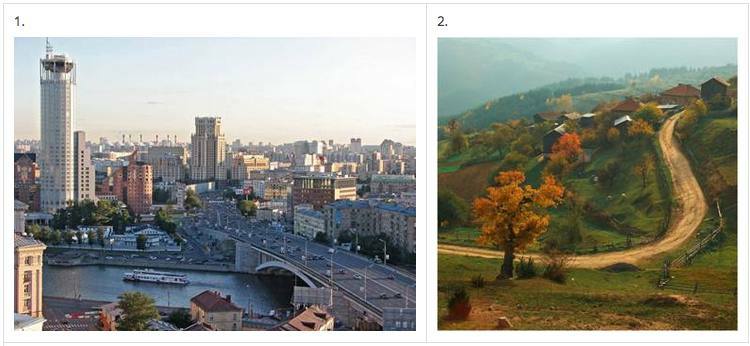
ВАРИАНТ ОТВЕТА:
ВВЕДЕНИЕ:
I am going to compare and contrast two pictures.
1. give a brief description of the photos (action, location)
In the first picture there is a big city, probably Moscow, with a bridge, river and skyscrapers. In the second one there is I guess a countryside view with a hill, road, village houses and trees.
2. say what the pictures have in common
These pictures have a few things in common. First of all, these are obviously two kinds of settlements, a city and village. Secondly, in both pictures one can see houses. In each pictue, it looks like early morning. Perhaps, the season is summer.
3. say in what way the pictures are different
There are some differences as well. First, the settlements are different. The first picture shows a city, whereas the second displays a village. In the left picture we can see a river, bridge and a lot of big buildings, while in the righ one can see small houses the road and hill. The colors of the trees are different. It seems that the seasons are different too, perhaps summer and autumn.
4. say which kind of life you’d prefer
Personally, I would prefer city life.
5. explain why
In my opinion, big cities give a lot of opportunities and I like it. A lot of new and interesting events take place in big cities and I like taking part in them. In addition, I’ve been living in a big city for a long time and I feel quite comfortable there.
ЗАКЛЮЧЕНИЕ:
That’s all I wanted to say.
Read by George William Dole
Task 4/3
Study the two photographs. In 1.5 minutes be ready to compare and contrast the photographs:
● give a brief description of the photos (action, location)
● say what the pictures have in common
● say in what way the pictures are different
● say which kind of life you’d prefer for wild animals
● explain why
You will speak for not more than 2 minutes (12–15 sentences). You have to talk continuously.
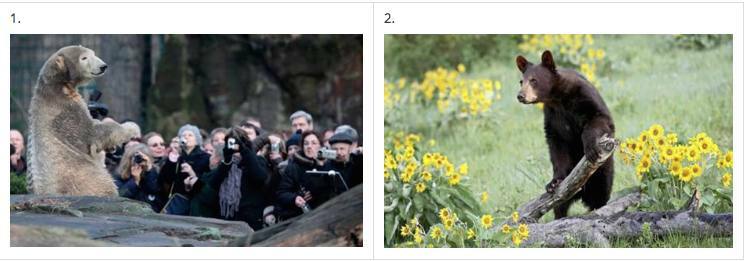
ВАРИАНТ ОТВЕТА:
ВВЕДЕНИЕ:
I am going to compare and contrast two pictures.
1. give a brief description of the photos (action, location)
In the first picture there is a bear sitting on a rock, probably in a zoo or a national park. In the second one there is a bear in wild nature holding a piece of a tree in its paws.
2. say what the pictures have in common
These pictures have a few things in common. First of all, these are two bears. Secondly, their bodies are in a vertical position. It seems to me that it’s daytime. The bears look cute and pleasant.
3. say in what way the pictures are different
There are some differences as well. Firstly, in the left side picture the bear is in a place that people built, whereas in the right side one the bear is in wild nature surrounded by some flowers and dry pieces of trees. Secondly, the first picture depicts a bear sitting on the rock with its back turned to us, while the second one presents a bear showing his front torso and trying to lift something heavy. It seems to me that it’s autumn in the first picture and summer in the second one.
4. say which kind of life would be better for the bears
Personally, I think that it would be better for bears to live in the wild rather than at a zoo.
5. explain why
In my opinion living in the wild is for wild animals. I believe they would feel better there and much happier.
ЗАКЛЮЧЕНИЕ:
That’s all I wanted to say.
Read by George William Dole
Критерии оценки, рекомендации и полезные советы.
Task 4/4
Study the two photographs. In 1.5 minutes be ready to compare and contrast the photographs:
● give a brief description of the photos (action, location)
● say what the pictures have in common
● say in what way the pictures are different
● say which of the activities presented in the pictures you’d prefer
● explain why
You will speak for not more than 2 minutes (12–15 sentences). You have to talk continuously.
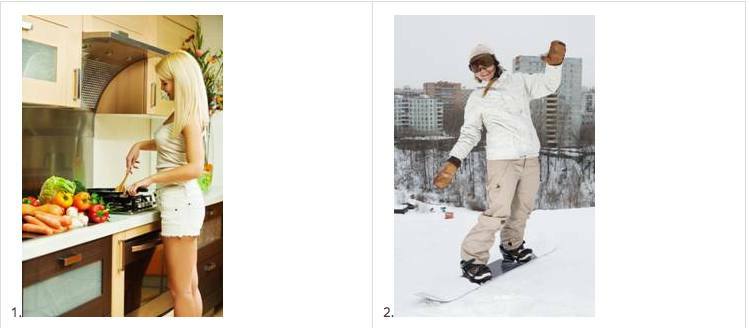
ВАРИАНТ ОТВЕТА:
ВВЕДЕНИЕ:
I am going to compare and contrast two pictures.
1. give a brief description of the photos (action, location)
In the first picture there is a woman is in her kitchen, cooking something. She has a pail of vegetables on the left and she’s stirring something in the frying pen. In the second picture the woman is snowboarding down a hill in the open air. It looks like she’s trying to keep her balance.
2. say what the pictures have in common
These pictures have a few things in common. First of all, these are two women. Secondly, their age is approximately the same. Also, they are both smiling. Their bodies are in the vertical position.
3. say in what way the pictures are different
There are some differences as well. First, the woman in the left picture is inside of a building, whereas the second woman is outside. Second, the woman in the left picture is wearing a t-short and shorts, whereas the woman on the right is wearing a sport-winter suit. Also, the woman on the left is cooking while the other woman is snowboarding. Their body positions are different as well. The woman in the left picture is standing with her left side to us while the woman in the right picture is facing us with the front of her body.
4. say which kind of life you’d prefer
Personally, I would prefer snowboarding.
5. explain why
In my opinion, it suits me better because I’ve been snowboarding for 5 years and I think that I am pretty good at it. I am not really a “stay at home” person.
ЗАКЛЮЧЕНИЕ:
That’s it, thank you for listening. ( обязательная фраза для экзаменатора, говорящая о завершении ответа)
Read by George William Dole
Task 4/5
Study the two photographs. In 1.5 minutes be ready to compare and contrast the photographs:
● give a brief description of the photos (action, location)
● say what the pictures have in common
● say in what way the pictures are different
● say which of the activities presented in the pictures you’d prefer
● explain why
You will speak for not more than 2 minutes (12–15 sentences). You have to talk continuously.

ВАРИАНТ ОТВЕТА:
ВВЕДЕНИЕ:
Let me tell you about these two pictures. I am going to compare and contrast them.
1. give a brief description of the photos (action, location)
Well, in the first picture you can see two women, a baby and a man wearing Christmas hats and posing for a photo. In the second picture we can see, I guess, parents kissing their son on both of his cheeks simultaneously and who is sitting in front of his birthday cake while smiling.
2. say what the pictures have in common
These pictures have a few things in common. First of all, these are both families. Second, they are celebrating something. Also they are wearing some hats, looking happy and smiling.
3. say in what way the pictures are different
There are some differences there as well. First, in the left picture there are 4 people, whereas in the right one, there are only 3. It looks like in one picture they are celebrating New Year or Christmas, while in the other picture, it seems that they are celebrating a birthday party.
4. say which kind of life you’d prefer
Personally, I like New Year celebration more than the birthday.
5. explain why
In my opinion, New Year celebration is considered to be the main holiday in Russia. People have a lot of hopes and expectations for the next year. They make a wish when the clock strikes 12. I like the happy emotions and vibes of this event.
ЗАКЛЮЧЕНИЕ:
That’s it, thank you for listening. ( обязательная фраза для экзаменатора, говорящая о завершении ответа)
Read by George William Dole
следующие 5 сравнений >>>>>

